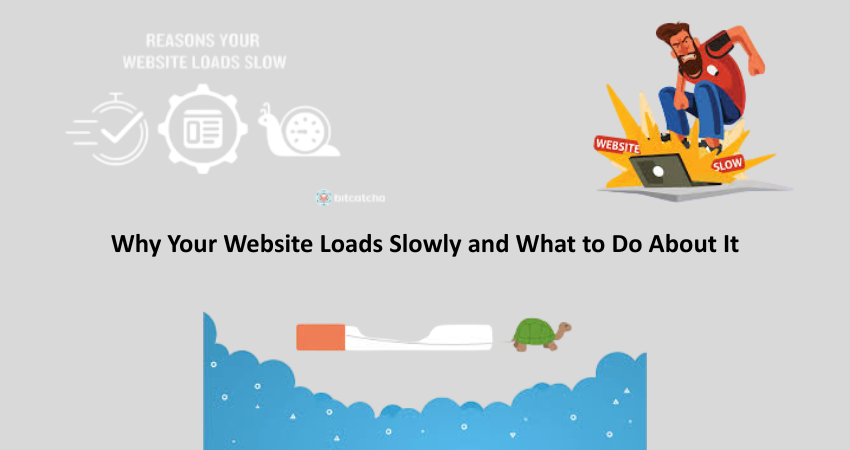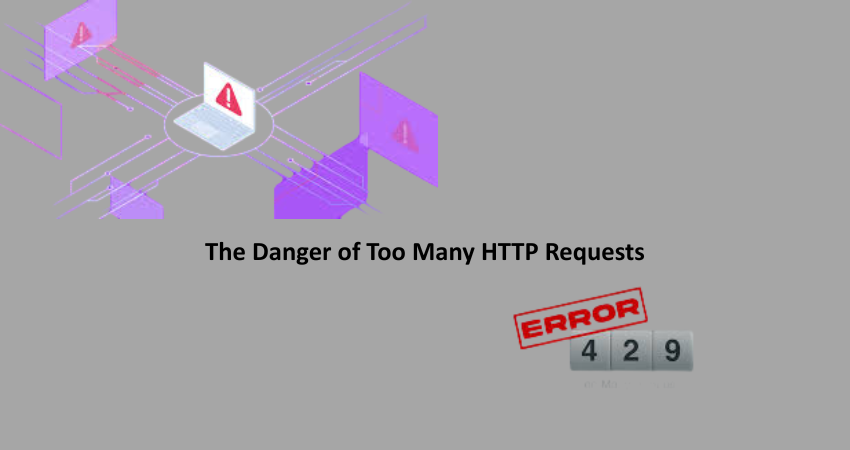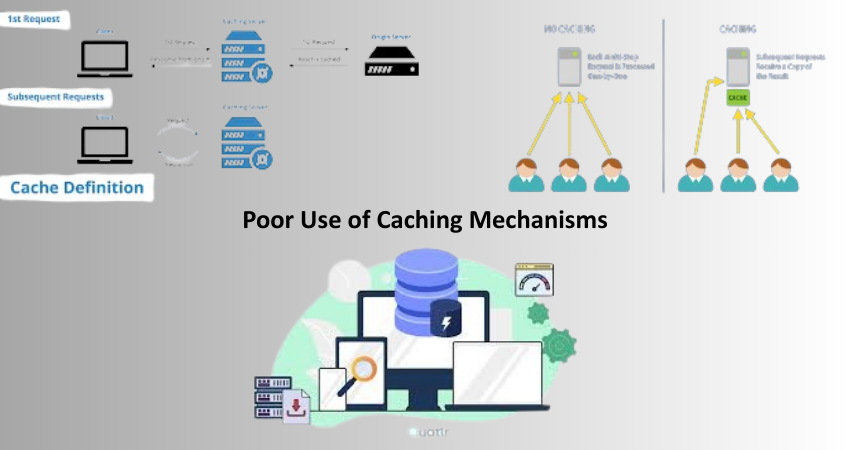
Introduction
Pushed a button on the website but waited only to see an endless spinning logo? Guess what-you’re not the only one. If your site behaves that way, you could be losing potential viewers, sales, and perhaps a part of people’s trusts, without you knowing too. Well, these users expect the websites within seconds to load. Longer than that, and they lose interest and sail away. Slow websites frustrates users, and they get less involved with it leading to waning everything from engines’ ratings to conversions.
What makes a website load that slowly anyway? Most cases of slow-loading sites do not come down to single causes. They usually come as a result of many technical mistakes or bottlenecks such as inefficient coding, unoptimized images, bad hosting, or non-existing caching strategies. This article highlights many causes by which websites take a longer time to load and above all provides easy and realistic solutions that you can undertake along your experience or technical know-how to solve. Whether you are a web developer, digital marketer, or small business owner, enhancing your site speed is one solid improvement to performance. Thus, let us guide you in that.
The Heavy Burden of Unoptimized Images
How Large Images Impact Load Times
The most popular factor for slow-loading websites remains images that are large and unoptimized. While an abundance of high-resolution images has not been resized or compressed for the web, understandably such a page would take a much longer time to render, especially on slow internet connections or mobile networks. But on top of that, images that take up too much space unnecessarily or are not in web-optimized formats (like BMP or TIFF) increase the excess weight of any web page by even more megabytes. This has a direct impact on the speed at which your server can push out content and how long your users have to wait to see it.
Another annoying factor is that very large image files can overwhelm the rendering engine of a browser and, therefore, the user experience, especially when combined with other elements on the page like animations, sliders, or embedded media. Cheerfully enough, this situation increases the size of the monster: loading those numerous large images without lazy loading would cause them all to load simultaneously. This bottlenecking effect aggravates the users and increases the overall bounce rates.
Solutions for Optimizing Image Performance
To effectively deal with the issue of large image files, the first step is to carry out a full site audit for determining which images are overly large, utilizing tools such as Google PageSpeed Insights or GTmetrix. Once identified, they should be resized to the exact dimensions that are needed in the page-don’t just scale them down using HTML or CSS. Use any of the image compression tools, such as TinyPNG, ImageOptim, or WordPress-like CMS plugins, such as Smush or ShortPixel, to compress the image without visible quality loss. Further switching to a modern format such as WebP or AVIF will also trim the file size drastically compared to JPEG or PNG.
In addition to compressing and changing image formats, lazy loading must be employed so that image loading is delayed until they become visible in the user’s viewport. This drastically impacts the initial loading time of the page. Consider implementing the use of a content delivery network (CDN) to help deliver image assets from different geographic locations in an effective manner so that users always get images from the closest server available.
The Danger of Too Many HTTP Requests

What Happens When Every Element Requires a Request
As the user visits a webpage, the browser performs HTTP requests for loading the elements of the page, some of which include images, scripts, stylesheets, fonts, etc. Too much of request generation by your site, even for small requests, piles the delay feasting on each. It becomes most obvious on mobile connections or in regions with high latency. Each request travels to the server and back, that means the more request your site generates, the more loading time it takes.
JavaScript files, CSS files, and third-party assets (such as social sharing buttons or ad trackers) are particularly guilty of sending bloated HTTP requests. A single plugin in your CMS may already generate multiple requests to load stylesheets, icons, and external libraries. Resource inclusion strategies are inefficient from the scope of request optimization and are compounded across the scale of your site, making optimization an important performance strategy.
How to Reduce and Optimize HTTP Requests
First Conduct a full site audit of assets using Chrome Developer Tools or use an online alternative like WebPageTest. Identify scripts and stylesheets for combining, minifying, or deleting. Tools like Gulp, Webpack, or WordPress plug-ins such as Autoptimize should be used to combine multiple CSS or JS files into one, thus minimizing the number of requests the browser has to make.
Remove the unnecessary third-party plugins or replace them with even smaller alternatives. Just the fonts or libraries you think are necessary will be called into action. Inline crucial CSS for fast rendering and lazy load the non-essential JavaScript after the major content is loaded. Set up browsers for caching and CDNs to serve faster repeat users by having their browsers be able to store these resources locally.
Bloated or Inefficient Code
The Hidden Cost of Untidy Codebases
Any code which has increased size in HTML, CSS, or JavaScript will also have an adverse effect on the performance of websites. The browser will be forced to process so many unnecessary instructions, thus delaying the response from the server. The issues causing code bloat include inline styling, making unnecessary tags, libraries that are not used, and an excessive population of DOM elements. In the case of dynamic sites such as WordPress, plugin overuse creates redundant back-end processes and dirty outputs in the front end.
Worse yet, JavaScript also suffers poor performance. Scripts that block rendering or make too many synchronous calls hinder the visible loading of content. Excessive use of libraries such as jQuery when native JavaScript can accomplish the task more efficiently simply adds weight to the site. There is rarely a cleanup of legacy code, nor do developers typically look at third-party scripts for performance, resulting in bloated, inefficient web pages.
Streamlining and Refactoring Code
Your brief is appreciated. Starting with the HTML structure, analyze it and remove unnecessary nested elements and inline styles. Use PurifyCSS or UnCSS to detect and remove unused selectors from the CSS. Likewise, for JavaScript, audit your code to spot unused functions or libraries. USE tarders like Terser or UglifyJ to minify all CSS and JavaScript files, or you could select from any other online tools of your choice.
Modern JS practices can be implemented where possible. Hence, consider using async and defer for loading JS resources, and where possible, eliminate jQuery functions in favor of their native counterparts. On WordPress or any other CMS platform, reduce active plugins, and constantly review your stack for performance impact. On the backend in PHP, Python, or Node.js, the aim should be to refactor away any unnecessary database calls or badly written logic causing page delivery delays.
Slow Server Response and Hosting Problems
Why Hosting Infrastructure Plays a Major Role
The server performance often serves as the bottleneck to website speed. If the hosting provider ends up using old hardware and stuffed shared servers or failing to implement optimized server-side caching, all the frontend optimizations fail. Time To First Byte (TTFB) is the time taken by the server to process a request and begin sending the data back, which plays a critical role in the website loading speed.
Cheap shared hosting plans will save you some money, but in return, they may compromise performance by sharing the same resources between hundreds of websites. Should another website on your server have a traffic spike, your website’s performance will be dragged down along with it. This problem becomes particularly troublesome for database-heavy sites, such as eCommerce stores or media-rich blogs. Without scalable infrastructure, you’re going to run into limits very fast.
Upgrading Hosting and Server Optimization Tactics
Get ready to rock your hosting. Go from shared hosting to either VPS (Virtual Private Server) or cloud hosting (such as AWS, Digital Ocean, or Cloud Ways) to gain incredibly fast speed and reliability. This type of hosting means that you have more control to optimize server resources. If your website is on WordPress, a managed platform like Kinsta or WP Engine could be worth considering. They incorporate server performance features and caching at the server level.
Server-side caching techniques such as object caches (like Redis or Memcached) and full-page caching are good methods to further reduce TTFB. They also implement GZIP compression and HTTP/2 for enhanced content delivery. Make sure you check server uptime, CPU, and memory usage regularly. As traffic keeps scaling up, load balancing the traffic across multiple servers yields fast performance on peak.
Poor Use of Caching Mechanisms

The Power of Browser and Server Caching
Caching is perhaps the most powerful means to speed up websites. It allows repeated users to locally store parts of your website on their own devices so that they do not have to reload everything from scratch. But many websites are either poorly configured or skip caching altogether; without caching, on each visit, the browser is forced to retrieve the full page from the server, thus decreasing load times and inflating bandwidth consumption.
There are many forms of caching: browser caching, which saves assets like images and stylesheets on the user’s device; server-side caching, which stores static versions of dynamically generated pages; and object caching, which enhances database performance. If on top of this caching schema there are no configurations or if they are configured incorrectly, then it is a severe constraint on site speed.
Implementing Effective Caching Strategies
It might be a good idea, I think, to set suitable headers for your caching through .htaccess, nginx.conf, or whatever control panel your hosting provider may offer. With this, you could set an expiry time for all static assets, image files, background images, scripts, and the like. Then, if WordPress is in use, server-side caching plugins such as WP Super Cache, W3 Total Cache, or LiteSpeed Cache should be installed. For custom stacks, you might consider Varnish or Nginx FastCGI caching.
For database-heavy apps, consider taking the extra step and implementing object caching with Redis or Memcached, effectively cutting down the time for database queries. In conjunction with CDN caching at edge locations for static content, this will bring the resources closer to the users. Moreover, ensure you cache wisely-gain cache-busting techniques for refreshment of the content without hampering performance while making updates.
Conclusion: Speed is a Strategy, Not Just a Feature
Page load speed is not just a mere technicality; it is one of the important aspects of any of the online strategies. It would also improve user experience, SEO and even increase the conversion rate. The first thing to look into is just what slows down your site: oversized images, a lot of heavy cluttered code, bad hosting, or lousy caching. Locate the culprit, and then it’s time to do something about it.
Speed optimization takes time, but it pays great dividends. Continuous audits, performance testing, and updates must be done to keep your website at peak performance. Slow load times should never be the reason for users to click away. With the diagnostic information and fixes discussed in this article, you are well on your way to providing a faster, seamless, and successful Web experience.